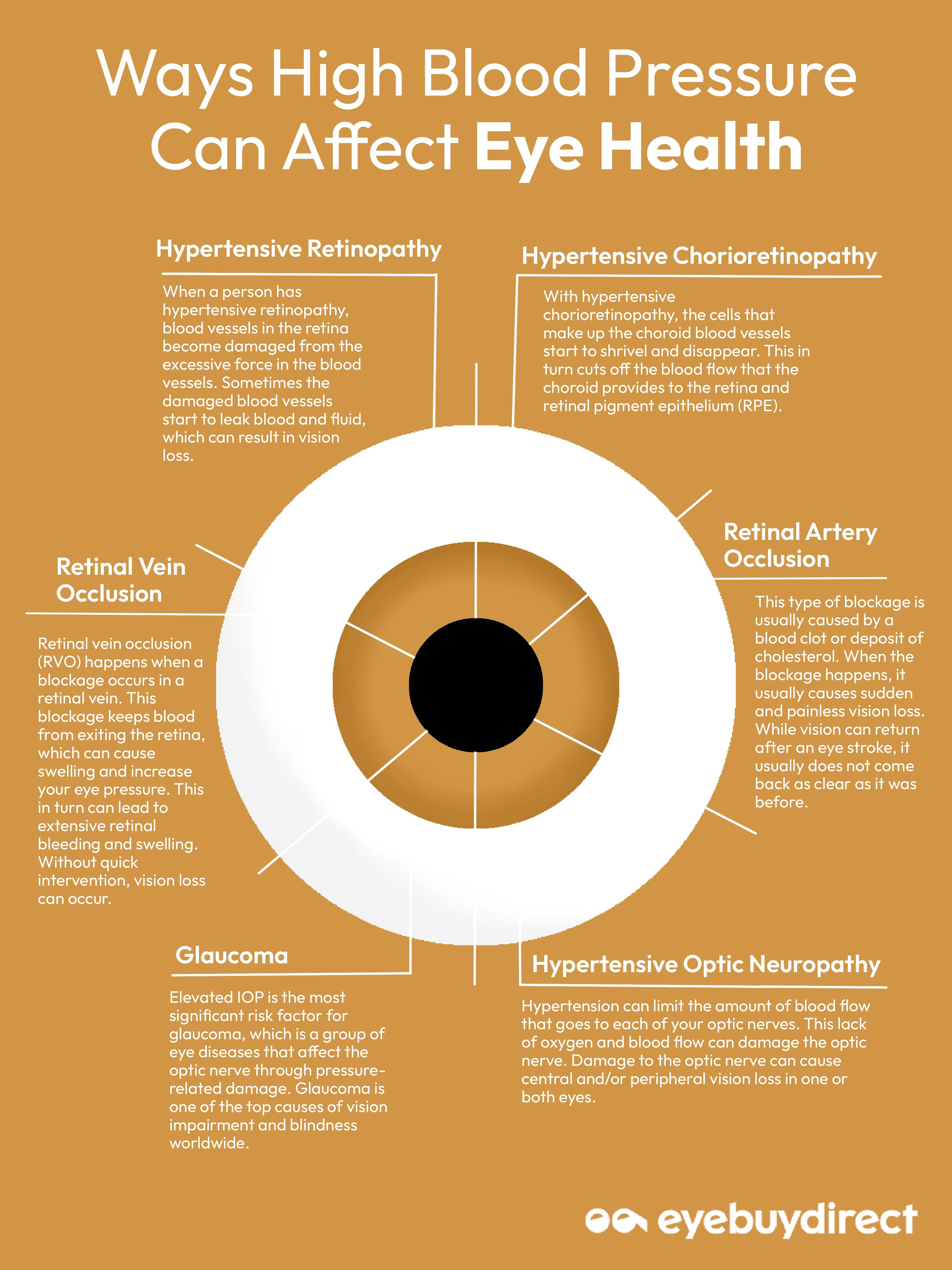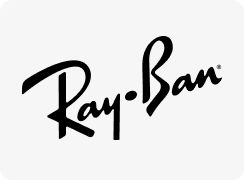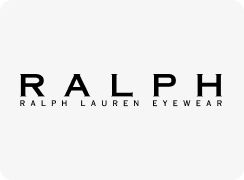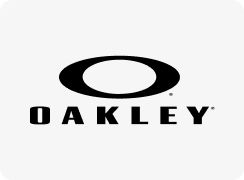In the EBD Blog
Reviewed by Brian Boxer Wachler, MD on August 4, 2023
High blood pressure, also called hypertension, is sometimes called the “silent killer” because it often has no symptoms. Many people have no idea they have it unless their blood pressure is extremely high. However, there are telltale clinical signs of hypertension that your eye doctor can see during a routine eye exam.
 In fact, your eyes are a good indicator of what’s happening in the rest of your body, and they can tell your eye doctor quite a bit about your overall health. In addition to hypertension, your eyes can show signs of diabetes, high cholesterol, and even cancer.
In fact, your eyes are a good indicator of what’s happening in the rest of your body, and they can tell your eye doctor quite a bit about your overall health. In addition to hypertension, your eyes can show signs of diabetes, high cholesterol, and even cancer.
Below are some of the ways high blood pressure can affect your vision and what you can do to prevent it.
What Does It Mean to Have High Blood Pressure?
Blood pressure (BP) describes the amount of force your blood needs to move through your blood vessels.
Blood vessels are small tubes that work as a highway, directing your blood throughout your body. When your heart beats, it works as a pump to help push blood through the blood vessels.
Having hypertension means your heart must consistently work harder to move your blood through the blood vessels. The increased work from your heart causes your blood to push against the walls of the blood vessels with too much force. Eventually, this excess force damages the blood vessel walls.
Effects of High Blood Pressure on the Eyes
Blood vessels are everywhere in your body, including different parts of your eyes. When hypertension begins to damage these blood vessels, various eye diseases can result.
The following eye diseases can occur when hypertension goes unmanaged:
Hypertensive Retinopathy
The retina is a layer of tissue that lines the back of the eye. It’s full of cells called photoreceptors that take light and turn it into electrical signals.
Those signals are sent through the optic nerve, which acts as a messenger between the eye and the brain. The optic nerve delivers the impulses to the vision center of the brain where they’re turned into an image.
When a person has hypertensive retinopathy, blood vessels in the retina become damaged from the excessive force in the blood vessels. Sometimes the damaged blood vessels start to leak blood and fluid, which can result in vision loss.
There are four stages of hypertensive retinopathy; however, symptoms usually don’t appear until later stages. During a comprehensive eye exam, an eye doctor can detect the early stages of hypertensive retinopathy before vision loss occurs. Treatment typically focuses on blood pressure management.
Hypertensive Chorioretinopathy
Under the retina is a layer of tissue called the choroid. The choroid is the middle layer of tissue that lines the walls of the eyeball. It's made almost completely out of blood vessels and provides blood flow, nutrients, and oxygen to the retina. Between the retina and the choroid is a thin layer of cells called the retinal pigment epithelium (RPE).
With hypertensive chorioretinopathy, the cells that make up the choroid blood vessels start to shrivel and disappear. This in turn cuts off the blood flow that the choroid provides to the retina and RPE.
Hypertensive chorioretinopathy is most common in younger adults (due to more blood vessel elasticity) who experience sudden elevations in blood pressure. This type of sudden (acute) hypertension can be caused by thyroid dysfunction, pain, and/or anxiety. It can also occur following the use of sympathomimetic medications like dopamine, epinephrine, dobutamine and isoproterenol.
Hypertensive Optic Neuropathy
Hypertension can limit the amount of blood flow that goes to each of your optic nerves. This lack of oxygen and blood flow can damage the optic nerve, hinder its ability to deliver signals to the brain, and eventually cause it to die, much like a stroke.
Damage to the optic nerve can cause central and/or peripheral vision loss in one or both eyes. Once optic nerve damage is done, it often cannot be reversed, and any vision loss is likely permanent.
Retinal Artery Occlusion
Arteries are blood vessels that carry blood to different parts of the body, including the retina. Hypertension can increase the risk of a blockage forming in a retinal artery. When this happens, it’s called a retinal artery occlusion (RAO) or “eye stroke.”
This type of blockage is usually caused by a blood clot or deposit of cholesterol. When the blockage happens, it usually causes sudden and painless vision loss. While vision can return after an eye stroke, it usually does not come back as clear as it was before. However, it depends on the timing of intervention. Some maneuvers can be performed in the emergency department to unblock or dissolve the clot which can improve chances of full vision recovery.
RAO is especially dangerous because the blockage can break free from the retinal artery and travel to the brain, resulting in a brain stroke. So, if you notice sudden vision loss or changes in your sight, you should see a doctor immediately — even if you don’t have hypertension!
Retinal Vein Occlusion
Similar to arteries, veins transport blood through the body. However, veins carry the blood away from an organ once it’s run its course, whereas arteries carry the blood to the organs.
Retinal vein occlusion (RVO) happens when a blockage occurs in a retinal vein. This blockage keeps blood from exiting the retina, which can cause swelling and increase your eye pressure. This in turn can lead to extensive retinal bleeding and swelling. Without quick intervention, vision loss can occur.
Glaucoma
Research suggests there’s an important relationship between hypertension and intraocular pressure (IOP). So, if your blood pressure spikes, so too can the pressure within your eye.
Elevated IOP is the most significant risk factor for glaucoma, which is a group of eye diseases that affect the optic nerve through pressure-related damage. Glaucoma is one of the top causes of vision impairment and blindness worldwide. While other factors can lead to glaucoma, maintaining a healthy blood pressure can help reduce your risk of increased IOP.
Ocular Symptoms of High Blood Pressure
When it comes to hypertension and your eyes, there are very few, if any, noticeable symptoms. Especially in the early stages, eye-related signs of high blood pressure often go unnoticed without an eye exam.
However, it’s possible you may experience some of these eye-related symptoms if you have high blood pressure: * Double vision * Blurry vision * Dim vision * Vision loss, which may affect central or peripheral (side) vision * Headaches
How to Prevent Hypertension Vision Problems
Managing your blood pressure is the best way to prevent hypertension-related vision problems. Here are some simple ways to manage hypertension:
Monitor Your Blood Pressure
You can’t know you have hypertension if you don’t know what your blood pressure is. Many grocery stores offer a complimentary BP machine in the pharmacy department. Whether you use this or purchase a portable machine for personal use, it’s important to keep track of your BP levels. Primary care and general doctors, among others, will also routinely check your blood pressure.
Eat a Low-Sodium Diet
Research has confirmed a significant link between dietary sodium intake and hypertension. Cutting back on sodium and incorporating plenty of fruits, vegetables, and whole grains into your diet can help keep your blood pressure at a healthy level.
Quit Smoking
Using cigarettes, vapes, and/or hookahs can raise your blood pressure and put you at higher risk of developing hypertension. Smoking can negatively affect almost every other aspect of your health too, including your heart, lungs, eyes, teeth, and immunity.
Kicking the habit can help stabilize your BP and reduce your risk of developing numerous vision-threatening and potentially fatal conditions.
Exercise Regularly
Studies suggest that performing aerobic exercises like walking or cycling at least three times a week can improve blood pressure in people with resistant hypertension.
Manage Your Stress Levels
If you go through a prolonged state of stress, it can affect your sleep quality, diet, exercise frequency, and other aspects of your life. This chronic stress can have an indirect effect on your blood pressure, causing it to creep up over time. Try to incorporate stress management tactics, like exercise and meditation, to avoid the risk of hypertension and its overarching effects.
Limit Your Alcohol Intake
Excessive alcohol consumption causes several changes to occur within your body, many of which directly affect the blood vessels. These changes in turn can elevate your blood pressure. Enjoying alcohol in moderation can help keep hypertension in check.
Maintain a Healthy Weight
Obesity accounts for an estimated 65% to 78% of primary hypertension cases. Regular exercise, a healthy diet, increased physical activity, and practicing moderation can promote weight loss and help normalize your blood pressure.
Get Annual Eye Exams
If your eye doctor notices signs that you have high blood pressure, they will likely discuss the condition with you and recommend that you return for a dilated eye exam at least once a year to monitor for any changes.
However, if you have any sudden vision loss or dramatic changes to your sight, you should see them again as soon as possible.
Follow Your Doctor’s Recommendations
Upon finding signs of hypertension, your eye doctor will probably refer you to your primary care physician for further assessment and treatment. This often includes prescription medications to help manage your blood pressure.
It’s important that you take any prescription medication as directed by your doctor. Inconsistent or sudden discontinuation of a medication can be dangerous. If you experience side effects from any medicine, talk to your doctor. They can adjust your medication to offer the most benefits with the least amount of side effects.
SOURCES
1. High Blood Pressure (Hypertension). Cleveland Clinic. May 2023.
2. 8 Things Your Eyes Can Reveal About Your Health. All About Vision. January 2020.
3. What Is High Blood Pressure? American Heart Association. May 2023.
4. Anatomy, Head and Neck: Eye Retina. StatPearls. August 2022.
5. What Are the Different Stages of Hypertensive Retinopathy? Medical News Today. June 2022.
6. Choroid of the Eye: Anatomy and Function. All About Vision. September 2021.
7. A Review of Hypertensive Retinopathy and Chorioretinopathy. Clinical Optometry (Auckland). May 2020.
8. Hypertensive Urgency. StatPearls. May 2023.
9. Sympathomimetic Medications: Nursing Pharmacology. Osmosis. Accessed August 2023.
10. Why Healthy Blood Pressure Is Important for Healthy Eyes. All About Vision. April 2022.
11. What Is Ischemic Optic Neuropathy? American Academy of Ophthalmology. April 2023.
12. Central Retinal Artery Occlusion. Johns Hopkins Medicine. Accessed August 2023.
13. Retinal Vein Occlusion (RVO). Cleveland Clinic. June 2023.
14. Role of Hypertension as a Risk Factor for Open-Angle Glaucoma: A Systematic Review and Meta-Analysis. BMJ Open Ophthalmology. September 2021.
15. Blindness and Vision Impairment. World Health Organization. October 2022.
16. High Blood Pressure and Eye Disease. Mount Sinai. August 2022.
17. The Eyes Have It for High Blood Pressure Clues. American Heart Association News. December 2018.
18. Sodium Intake and Hypertension. Nutrients. September 2019.
19. Managing Blood Pressure with a Heart-Healthy Diet. American Heart Association. June 2023.
20. Smoking and Hypertension. UpToDate. June 2022.
21. Health Effects of Cigarette Smoking. Centers for Disease Control and Prevention. October 2021.
22. Effect of Exercise Training on Ambulatory Blood Pressure Among Patients with Resistant Hypertension: A Randomized Clinical Trial. JAMA Cardiology. August 2021.
23. Do Stress and Anxiety Cause High Blood Pressure? Cleveland Clinic. July 2022.
24. What to Know About Alcohol and Blood Pressure. Medical News Today. September 2021.
25. Obesity-Related Hypertension: A Review of Pathophysiology, Management, and the Role of Metabolic Surgery. Gland Surgery. February 2020.















